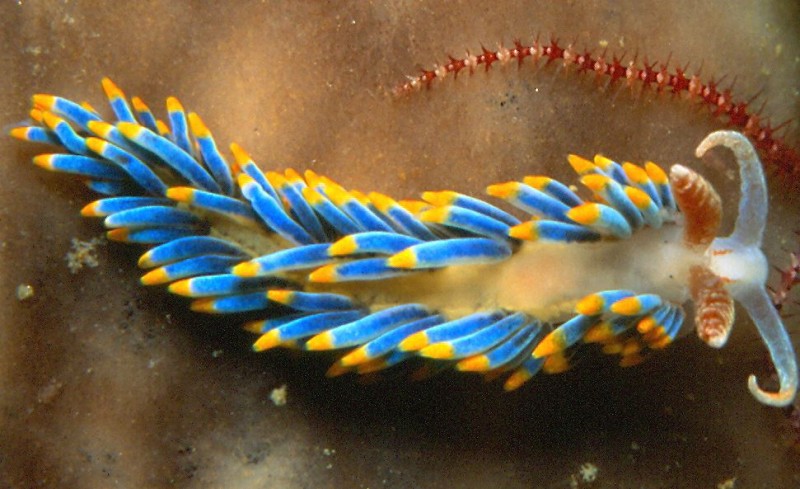
Nature never ceases to amaze us with its incredible adaptations, and one such fascinating example is the sea slug called Elysia chlorotica. Unlike typical slugs, this small, unassuming creature possesses a remarkable ability - it can photosynthesize like a plant. The process of photosynthesis, usually associated with green plants, is a phenomenon where organisms convert sunlight into energy. Elysia chlorotica, however, has taken this biological marvel to a whole new level. In this article, we delve into the world of this extraordinary sea slug and explore how it achieves photosynthesis.
What is Elysia chlorotica?
Elysia chlorotica, commonly known as the eastern emerald elysia or the green elysia, is a species of sacoglossan sea slug found along the eastern coast of North America. These small, green slugs are herbivores that primarily feed on algae. What sets them apart is their ability to retain chloroplasts from the algae they consume.
The Fascinating Adaptation: Photosynthesis in Elysia chlorotica
3.1 Understanding Chloroplasts
Chloroplasts are tiny, green organelles found in plant cells that play a vital role in photosynthesis. They contain chlorophyll, a pigment that captures sunlight and converts it into energy. In most cases, animals lack chloroplasts and cannot harness sunlight for sustenance. However, Elysia chlorotica is an exception.
3.2 The Slugs' Diet and Chloroplast Theft
Elysia chlorotica's diet consists mainly of algae, particularly Vaucheria litorea. While feeding, the slug does something extraordinary – it doesn't just digest the algae, but it also steals the algae's chloroplasts.
3.3 Incorporating Chloroplasts into Its Cells
The slug incorporates the stolen chloroplasts into its own cells, primarily in the cells lining its digestive tract and the surrounding tissues. This unique ability allows the slug to utilize the captured chloroplasts for photosynthesis.
3.4 Energy Production from Sunlight
With the captured chloroplasts in place, Elysia chlorotica can now convert sunlight into energy, just like a plant. This adaptation provides the slug with an additional source of sustenance, making it more resilient in its environment.
The Evolutionary Advantage of Photosynthesis in Slugs
The ability to photosynthesize provides Elysia chlorotica with a significant evolutionary advantage. By harnessing sunlight, the slug can reduce its reliance on external food sources, increasing its chances of survival during times of scarcity.
Similarities and Differences Between Elysia chlorotica and Plants
While Elysia chlorotica exhibits photosynthesis, it is essential to note that it is not a plant. The slug and plants have fundamental biological differences, despite this shared ability. Understanding these distinctions adds to the marvel of this unique adaptation.
The Remarkable World of Photosynthetic Animals
Elysia chlorotica is not the only creature to have developed photosynthetic capabilities. Several other animals, such as certain corals and salamanders, have also been found to possess this astonishing adaptation.
The Role of Chloroplasts in Photosynthesis
Chloroplasts are at the heart of photosynthesis. Understanding their role in this process not only sheds light on how Elysia chlorotica achieves photosynthesis but also deepens our knowledge of the broader mechanisms of this vital biological function.
The Genetic Secrets Behind Elysia chlorotica's Ability
Scientists have been intrigued by the genetic basis of Elysia chlorotica's photosynthetic ability. Exploring the genetic makeup of these sea slugs can provide valuable insights into the evolution of photosynthesis and unlock potential applications in other fields.
Environmental Implications and Conservation
The unique abilities of Elysia chlorotica have significant environmental implications. Understanding how these slugs interact with their surroundings could help us better comprehend the delicate balance of marine ecosystems and guide conservation efforts.
Ethical Considerations and Scientific Research
The study of Elysia chlorotica's photosynthetic ability raises important ethical considerations. Scientists must navigate questions of animal welfare and research ethics while advancing our understanding of this incredible phenomenon.
Potential Applications of Photosynthesis in Non-Plant Organisms
The discovery of photosynthesis in Elysia chlorotica opens up exciting possibilities for biotechnology and other scientific fields. Exploring how this adaptation works could inspire innovations in renewable energy and other areas.
The discovery of Elysia chlorotica, a sea slug capable of photosynthesis, has expanded our understanding of the diversity of life on Earth. This tiny creature challenges conventional notions of how organisms harness energy and serves as a reminder of nature's boundless ingenuity. Studying these remarkable adaptations can pave the way for breakthroughs in science and technology, leading us to a greener and more sustainable future.
Tell an Old Joke Day: Celebrating Timeless Humor of Yesteryears
Josephine Chaplin, Actor and Daughter of Charlie Chaplin no more!
Govt Action Looms for Twitter after Viral Video of Manipur Women Paraded Naked